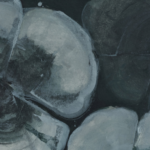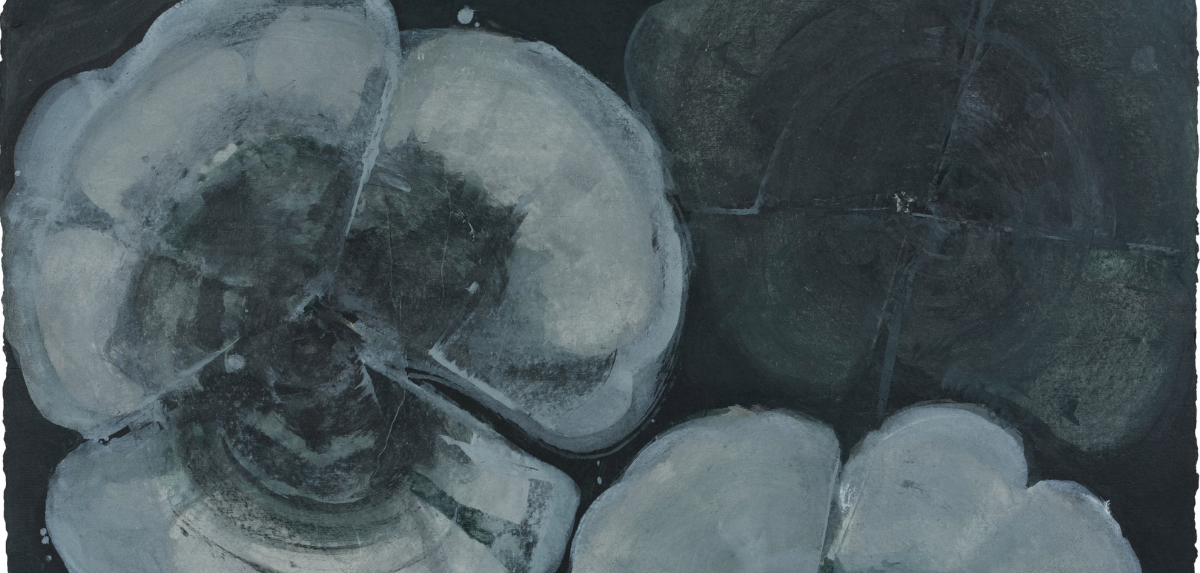
Her art exists at the boundary of these two concepts, tirelessly interrogating what constitutes living, beauty and art itself.
By Hannah Figenschou Johansen
Stones, shells, sand, a cold sea breeze against a warm cheek. To Gao Ping, these are living objects. Without a language of their own, they have only their physical marks, accreted through time, to tell their stories. Time leaves layers. This is the essence of Gao Ping’s solo exhibition.
“Born by the coast, I have a lot of feelings about the sea” she says.
A first glance at Gao Ping’s paintings confirms this. She describes the winter her father died. Dark days, pale clouds and the ebb and flow of the tide. These memories become central to Gao Ping’s work. “We are all experiencing the same process of life and death,” she says. She uses earthy tones—black, grey, ochre and moss green—synonymous to darkness and sorrow but which, instead, express as calm and controlled. There is a photographic element to the work. In Landscape 3 and Landscape 12,particularly, stillness is rendered from shadowy chaos. This is Gao Ping’s talent, to create beauty from darkness.
Her art conveys a pathos achieved from practices like playing Guqin—an ancient Chinese string instrument—and reading realist poets like Jorge Borges. This emotive quality is crucial to her paintings. “An object itself might be tiny, but it is so much more than that. It is eternity, a symbol of life and time itself”. Flower 1 and Flower 2 explore the poetic world of Gao Ping. What strikes viewers as a still life of a flower, reveals layers of age that beg comparison to growth rings of a tree.
Her art doesn’t necessarily represent the beauty of the object. For Gao Ping, what is important is the power of her art. Her work belies the stereotype of feminine beauty and, instead, demonstrates a darkness not often associated with women artists. It comes as no surprise that she counts Louise Bourgeois as one of her inspirations.
When asked about this, she says it is her way of staying true to herself. She is a self-described antithesis to another woman painter of flower, Georgia O’Keeffe. Gao Ping’s flowers, however, do not portray the feminine form. Their power is universal and, particularly, genderless. Removing the bold colours leaves viewers with the abstract.
In her own writings, Ping distinguishes between life and living, between shengming 生命 and shenghuo 生活. Her art exists at the boundary of these two concepts, tirelessly interrogating what constitutes living, beauty and art itself. Her ability to draw beauty from the bare form of a flower is proof that the distinction might not be so clear.
She admits she will never find the answer, but she enjoys trying. When asked about the most important part of life, she starts to laugh. “I’m too young to tell, however an older friend once said life itself is to live the moment, do what you want to do now”.
